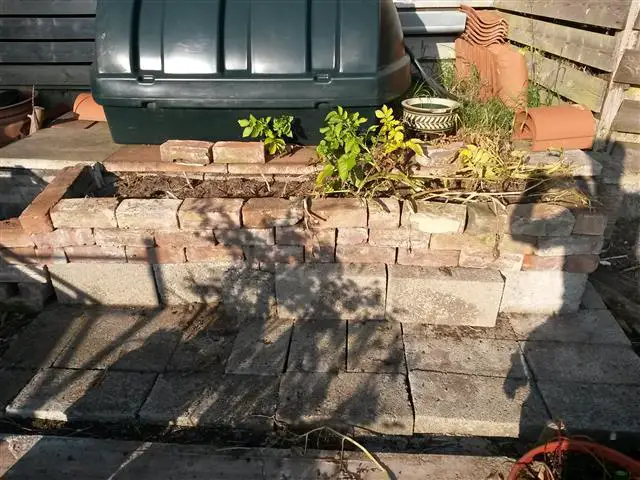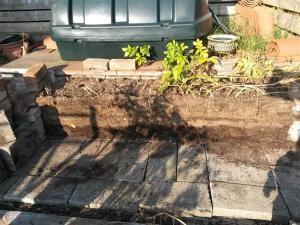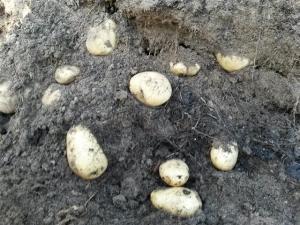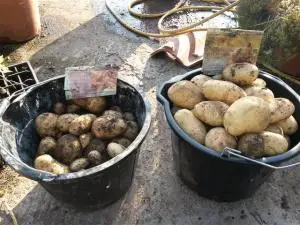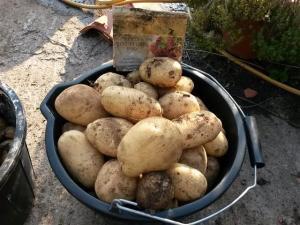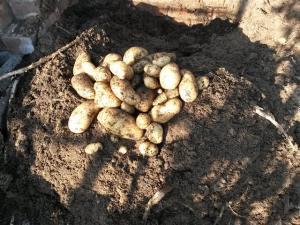The Brick Potato Planter – Was It Worth It?
Back in may I posted a little experiment with a loose brick-built potato planter. This is following the technique of planting a few potatoes near the bottom of a container – traditionally a barrel or drum – then as the plant grows you keep adding the soil until the plant eventually reaches the top. (see the first post here)
The theory is sound, and is indeed a great way to increase your potato crop – but by how much?
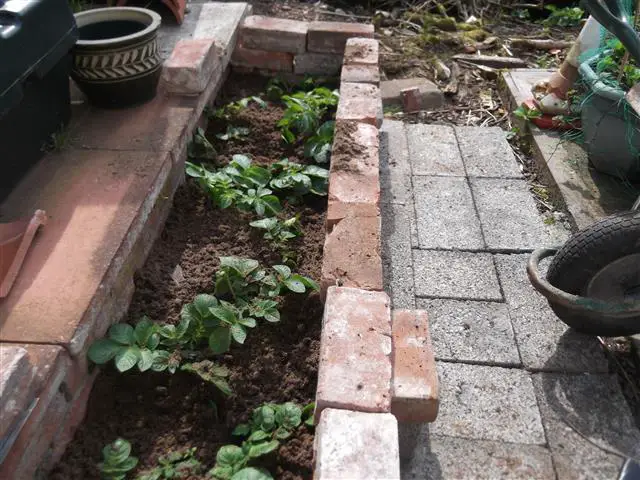
This trench was then filled as the plants grew according to the usual method regarding growing potatoes in a barrel. Two types of potato were planted just because that is what I had in the shed 🙂 One was Wilja – an early variety – and the other Maris Piper
– an early variety – and the other Maris Piper – a main crop great for roasts or mashing.
– a main crop great for roasts or mashing.
Both were put in together in late April and the results are what we are looking at now.
As you can see, the Maris Piper are just ahead of the Wilja, and the purple flowers are beginning to open out. The Wilja are still doing well though and the flower buds are just beginning to form, though it’s not clear from this picture.
What is also not clear, is the fact that I ‘took my eye off the ball’ and over the course of the summer the potato shaws just grew and grew! Eventually they flopped over the side of the ‘container’ and lay on the ground. The fear was of course that I would have a great harvest of shaws – with no potatoes to show for it!
What you should actually do is to nip the shaws off when they get to about 12 inches (300mm) high. This way the plant will concentrate on building the tubers instead of wasting all its energy on foliage.
Let The Potato Harvest Begin!
Anyway, the great day arrives late August when the shaws have died away to nothing – and the harvest begins..
First the bricks and blocks are pulled away from the front to enable access.
If you look click on the image to get the larger view and look closely, you might just see a couple of potatoes sticking out from the left hand side of the soil – definately a good sign that there may actually be a harvest here 🙂
I have to admit I always enjoy digging up the potatoes in normal circumstances. Maybe it’s just the thrill of not knowing exactly how good the harvest will be, until the lifting begins and all is revealed.
The first good news here, is that there are no wasted potatoes that have gone green due to exposure to the light. It really eats me up to see a good baking spud half green and wasted!
hey hey! The spuds are finally dragged out of their sleeping space in what turns out to be a very successful mix of 50% builers sand to 50% compost.
The potatoes are clean and undamaged either by the garden fork, or by burrowing critters.
A quick brush with my hand and they are ready to boil, mash, roast or bake.
The end results you can see in the picture below, with the Wilja on the left and the Maris Piper on the right.
Bear in mind that the balance of the seed potatoes was about 1/3 Wilja to 2/3 Maris Piper.
The results regarding the final potato crop are fairly even when you see them in a pail side by side. The Wilja pail is about 2/3 full while the Maris Piper is totally full – overall a great result for both potato varieties.
One thing though THE LABELS ARE THE WRONG WAY AROUND! Yes what can I say – I’ve screwed up the pictures and put the labels in the wrong pails! So just reverse them and you’ll get the idea 🙂 The pail on the left is the Wilja, while the pail on the Right is the Maris Piper.
The weigh-In:
OK so bottom line – what is the difference in weight from planting the seed potatoes to harvesting the crop?
Prepare to be surprised because 2.5 lbs in total of seed potatoes have produced 38.5 lbs of great spuds!
So not only did the idea of a brick potato trench work well, but the growing mix of sand and compost seemed to be ideal for producing clean, healthy tubers. And just imagine, if I had remembered to snip the foliage when it got to around 12 inches high instead of letting the plant waste all it’s energy – the whole crop would undoubtedly been even heavier.
Anyway I’m sure you’ll agree that this is a great result, in fact it’s about a 1400% material gain on my investment !! Another great idea for the small vegetable garden I think 🙂
Next year I plan to plant carrots and onion sets in the same bed (good companions) – I’ll let you know how it goes.


